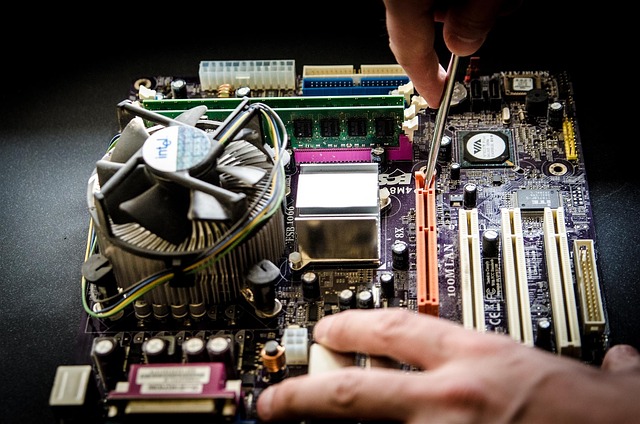DIY enthusiasts can avoid common pitfalls in home repair and maintenance—like inadequate planning and selecting unsuitable tools—by recognizing these challenges. With proper preparation, seeking guidance when needed, and using online tutorials, individuals can confidently tackle projects from fixing leaky faucets to replacing shelves. Meticulous planning, organized workspaces, proactive inspections, breaking tasks into manageable steps, and regular seasonal maintenance ensure successful DIY outcomes and keep homes in top condition year-round.
Struggling with a DIY project gone wrong? Don’t worry, you’re not alone. Even seasoned homeowners encounter failures from time to time. This article is your go-to guide for tackling common DIY mishaps head-on. We’ll explore the root causes behind popular home repair setbacks and equip you with essential tools and strategies to ensure success. From understanding basic mistakes to mastering prevention techniques, get ready to transform your DIY failures into manageable repairs with expert handyman solutions.
- Understanding Common DIY Failures and Their Causes
- Essential Tools and Resources for Handyman Interventions
- Step-by-Step Strategies to Prevent Future Disasters
Understanding Common DIY Failures and Their Causes

Many DIY enthusiasts embark on home repair and maintenance projects with enthusiasm, yet they often encounter setbacks that can leave them feeling frustrated. Understanding common DIY failures and their causes is the first step in transforming those disappointments into successes. One of the primary reasons for DIY mishaps is a lack of proper planning and research. Projects may seem straightforward at first glance, but delving deeper reveals intricate details and specific skills required. Rushing into a repair without understanding these nuances can lead to poor results.
Another frequent issue is underestimating the time and effort needed to complete a task. Home repair and maintenance often involve complex processes that require patience and precision. Time constraints or unrealistic expectations can cause DIYers to cut corners, resulting in subpar workmanship and potential long-term problems. Additionally, using unsuitable tools or materials due to impatience or unfamiliarity with the job can exacerbate these failures. Recognizing these common pitfalls empowers DIY enthusiasts to prepare better, seek guidance when needed, and ultimately achieve more satisfying results.
Essential Tools and Resources for Handyman Interventions

When it comes to handyman interventions, having the right tools and resources is essential for successful DIY projects. A well-equipped toolkit is a handyman’s best friend, ensuring they’re prepared for a range of home repair and maintenance tasks. Basic tools like screwdrivers (both flathead and Phillips), hammers, pliers, and measuring tapes are indispensable. For more complex jobs, a power drill with various bits, a circular saw, and a jigsaw can make quick work of cutting and shaping materials.
Online tutorials and resources play a significant role in modern handyman interventions. Access to step-by-step guides, how-to videos, and forums allows handymen to tackle projects with confidence, even if they’re new to certain tasks. These digital aids provide visual representations and detailed instructions, making home repair and maintenance more accessible and less intimidating. Whether it’s fixing a leaky faucet or replacing a broken shelf, having the right tools coupled with online resources can turn even the most challenging DIY failure into a manageable, successful project.
Step-by-Step Strategies to Prevent Future Disasters

Preventing future DIY disasters is a crucial part of home repair and maintenance, saving you time, money, and frustration. Start by creating a detailed plan before tackling any project. Break down the task into manageable steps, gathering all necessary tools and materials in advance to avoid mid-project interruptions. A well-organized workspace and clear understanding of the process will significantly reduce errors.
Regularly inspect your home for potential issues and address them promptly. Simple preventive measures like sealing gaps around doors and windows, checking pipe insulation, and maintaining electrical systems can save you from major repairs down the line. Stay updated with seasonal maintenance tasks, such as cleaning gutters in autumn or preparing heaters for winter, to ensure your home remains in top condition year-round.
When it comes to home repair and maintenance, DIY projects can be rewarding but also fraught with failure. Understanding common mistakes and arming yourself with the right tools are essential steps in navigating these challenges successfully. By following the strategies outlined in this article—from identifying root causes to implementing preventive measures—you’ll become a more confident and capable do-it-yourselfer, minimizing DIY disasters and maximizing your home’s potential.













